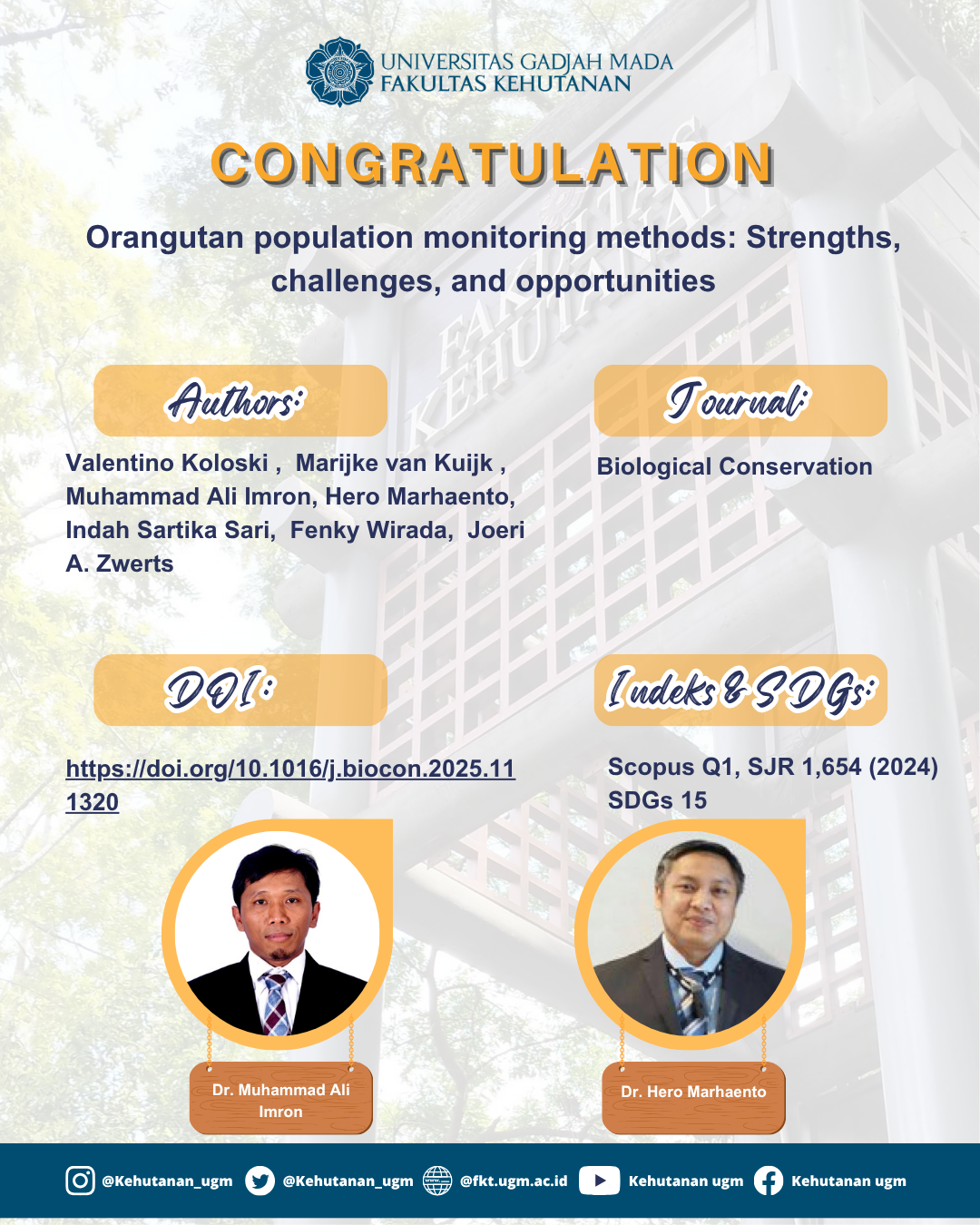
Abstract
Orangutan population sizes have been declining rapidly during the past decades. Proxies for the status of populations range from simple presence/absence data to estimations of absolute density. A variety of monitoring methods are available, including human observations, camera trapping, acoustic monitoring and aerial surveys. This qualitative review provides a comprehensive overview of population monitoring methods and associated metrics, discussing their strengths, challenges and opportunities.
Ground-based nest surveys are widely used and effective for density estimations but are costly, have a limited survey range, and rely on challenging nest parameters such as decay rates. Interview-based and citizen science methods can offer the means for long-term cost-effective data collection, but they provide less detailed population metrics due to human bias. Genetic analyses can present accurate population estimates but are constrained by difficulties in obtaining sufficient sample sizes. Camera traps face similar challenges with low capture rates. Acoustic monitoring is effective for detecting presence and absence but has limited use for density estimation, as only a subset of the population produces vocalizations that carry over long distances. Helicopters can rapidly survey large and remote areas for nests, but come with high operational costs. Emerging technologies, including automated nest detection with optical drones and direct observations with thermal drones, could offer cost-effective monitoring options but are often legally constrained to short flight ranges. Looking forward, very high-resolution satellite imagery may hold promise for overcoming many logistical challenges but currently remains underdeveloped for orangutan monitoring.
SDGs:
SDG 15:Life on Land
SDG 17:Partnerships for the Goals
Link Dokumen:
Download
